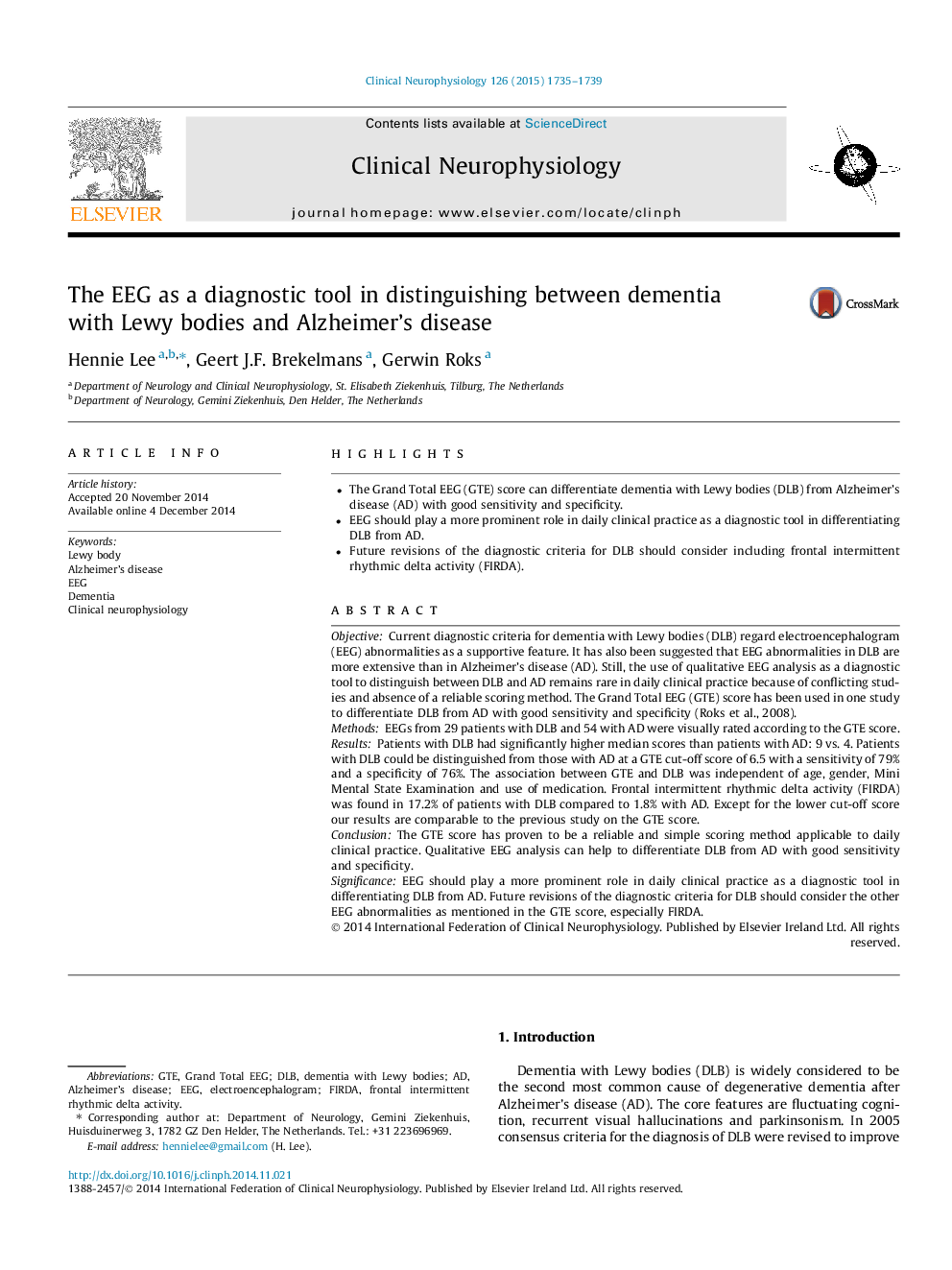| Article ID | Journal | Published Year | Pages | File Type |
|---|---|---|---|---|
| 3042822 | Clinical Neurophysiology | 2015 | 5 Pages |
•The Grand Total EEG (GTE) score can differentiate dementia with Lewy bodies (DLB) from Alzheimer’s disease (AD) with good sensitivity and specificity.•EEG should play a more prominent role in daily clinical practice as a diagnostic tool in differentiating DLB from AD.•Future revisions of the diagnostic criteria for DLB should consider including frontal intermittent rhythmic delta activity (FIRDA).
ObjectiveCurrent diagnostic criteria for dementia with Lewy bodies (DLB) regard electroencephalogram (EEG) abnormalities as a supportive feature. It has also been suggested that EEG abnormalities in DLB are more extensive than in Alzheimer’s disease (AD). Still, the use of qualitative EEG analysis as a diagnostic tool to distinguish between DLB and AD remains rare in daily clinical practice because of conflicting studies and absence of a reliable scoring method. The Grand Total EEG (GTE) score has been used in one study to differentiate DLB from AD with good sensitivity and specificity (Roks et al., 2008).MethodsEEGs from 29 patients with DLB and 54 with AD were visually rated according to the GTE score.ResultsPatients with DLB had significantly higher median scores than patients with AD: 9 vs. 4. Patients with DLB could be distinguished from those with AD at a GTE cut-off score of 6.5 with a sensitivity of 79% and a specificity of 76%. The association between GTE and DLB was independent of age, gender, Mini Mental State Examination and use of medication. Frontal intermittent rhythmic delta activity (FIRDA) was found in 17.2% of patients with DLB compared to 1.8% with AD. Except for the lower cut-off score our results are comparable to the previous study on the GTE score.ConclusionThe GTE score has proven to be a reliable and simple scoring method applicable to daily clinical practice. Qualitative EEG analysis can help to differentiate DLB from AD with good sensitivity and specificity.SignificanceEEG should play a more prominent role in daily clinical practice as a diagnostic tool in differentiating DLB from AD. Future revisions of the diagnostic criteria for DLB should consider the other EEG abnormalities as mentioned in the GTE score, especially FIRDA.
